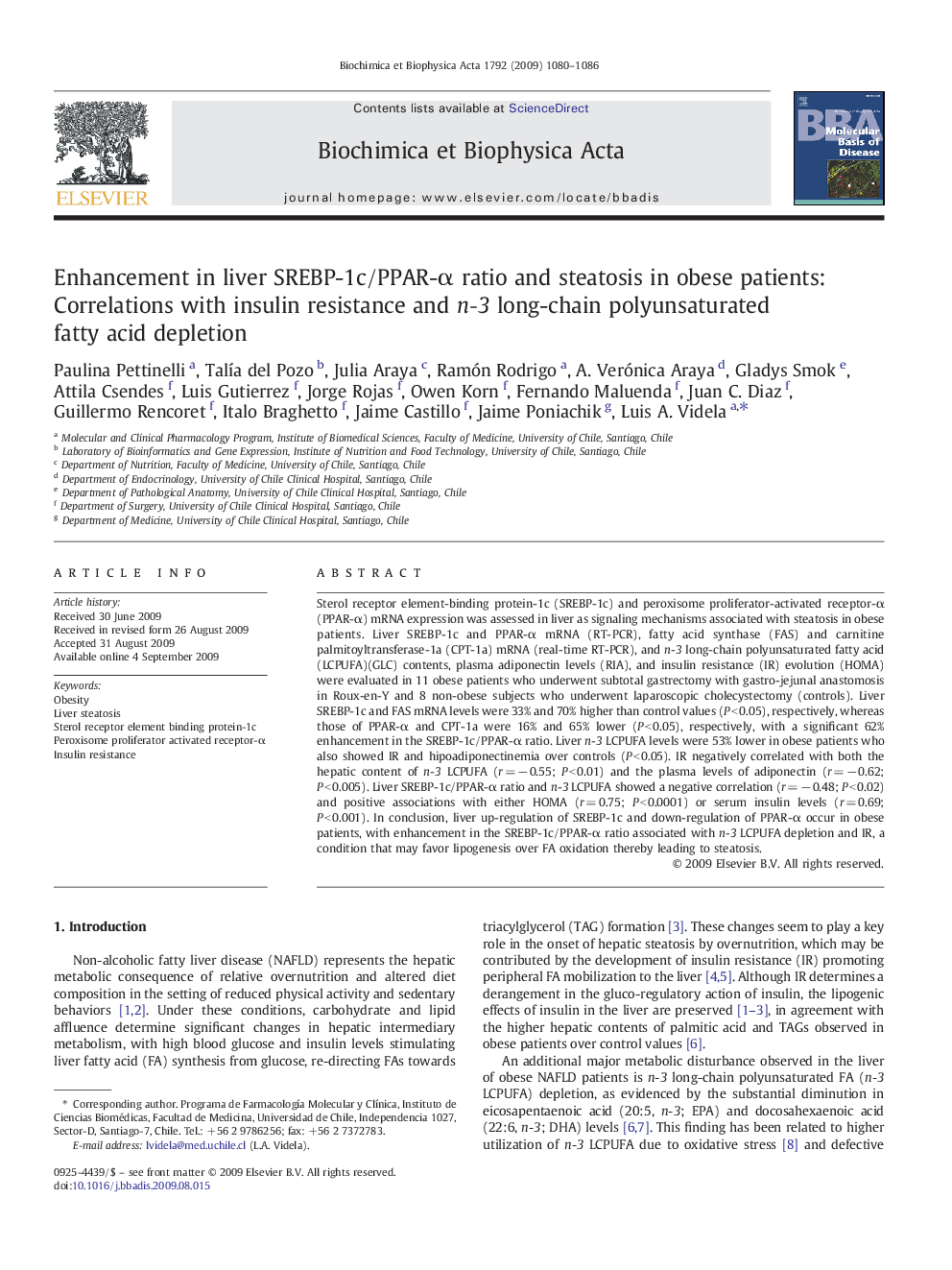| Article ID | Journal | Published Year | Pages | File Type |
|---|---|---|---|---|
| 1905462 | Biochimica et Biophysica Acta (BBA) - Molecular Basis of Disease | 2009 | 7 Pages |
Sterol receptor element-binding protein-1c (SREBP-1c) and peroxisome proliferator-activated receptor-α (PPAR-α) mRNA expression was assessed in liver as signaling mechanisms associated with steatosis in obese patients. Liver SREBP-1c and PPAR-α mRNA (RT-PCR), fatty acid synthase (FAS) and carnitine palmitoyltransferase-1a (CPT-1a) mRNA (real-time RT-PCR), and n-3 long-chain polyunsaturated fatty acid (LCPUFA)(GLC) contents, plasma adiponectin levels (RIA), and insulin resistance (IR) evolution (HOMA) were evaluated in 11 obese patients who underwent subtotal gastrectomy with gastro-jejunal anastomosis in Roux-en-Y and 8 non-obese subjects who underwent laparoscopic cholecystectomy (controls). Liver SREBP-1c and FAS mRNA levels were 33% and 70% higher than control values (P < 0.05), respectively, whereas those of PPAR-α and CPT-1a were 16% and 65% lower (P < 0.05), respectively, with a significant 62% enhancement in the SREBP-1c/PPAR-α ratio. Liver n-3 LCPUFA levels were 53% lower in obese patients who also showed IR and hipoadiponectinemia over controls (P < 0.05). IR negatively correlated with both the hepatic content of n-3 LCPUFA (r = − 0.55; P < 0.01) and the plasma levels of adiponectin (r = − 0.62; P < 0.005). Liver SREBP-1c/PPAR-α ratio and n-3 LCPUFA showed a negative correlation (r = − 0.48; P < 0.02) and positive associations with either HOMA (r = 0.75; P < 0.0001) or serum insulin levels (r = 0.69; P < 0.001). In conclusion, liver up-regulation of SREBP-1c and down-regulation of PPAR-α occur in obese patients, with enhancement in the SREBP-1c/PPAR-α ratio associated with n-3 LCPUFA depletion and IR, a condition that may favor lipogenesis over FA oxidation thereby leading to steatosis.
